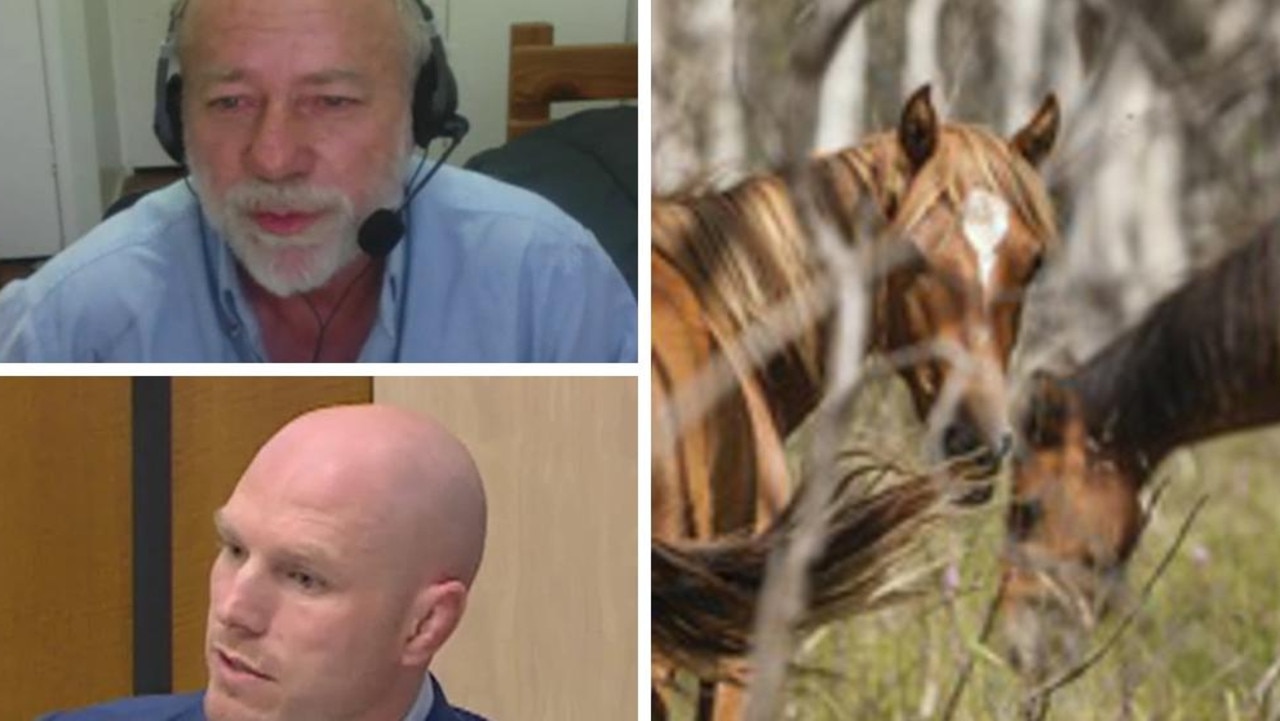A senate committee investigating potential culling of feral horses in Australia’s alpine regions became heated after it was revealed one speaker had received funding from the Brumby lobby.
Independent senator David Pocock questioned Dr David Berman over a report he said was partly funded by the Brumby Alliance, which he said also promoted and helped produce the study.
The Alliance advocates for protections of feral horses in the Alps and in July shared the University of Southern Queensland academic’s report, which contradicted evidence given to the committee.
Dr Berman told the Canberra senator the funding was not a “conflict of interest”, and that the collaboration with the pro-brumby group was done in the spirit of “community engagement”.
“I have 40 years experience managing federal horses, none of them (other scientists) have any experience managing feral horses,” Dr Brennan told the committee on Thursday afternoon.
“They (the scientists) are saying let’s eradicate (the horses). I could do it. I could get the horses out. Very few people could. But, you need to justify it. It needs to be very strongly justified.”
The revelation comes after an almost two hour hearing into the invasive animal species, whose eradication has long been debated as populations in the threatened alpine ecosystem skyrocket.
The inquiry, chaired by Green’s senator Sarah Hanson-Young, with the National’s Ross Cadell, Labor’s Karen Grogan, is investigating the “impacts and management of feral horses in the Alps”.
Five scientists from a range of research centres, including the Australian National University, gave evidence to the “urgent need” to bring down feral horse numbers, which grew by 3700 last year.
The professors warned that, based on a WA study, just 100 horses could have an accumulative impact on the fragile ecosystem, with the feral horse population tipped to double within five years.
“It beggars belief that feral horses have been a priority in an area that‘s critical for a range of our native species,” Deakin University’s Professor of Terrestrial Ecology Dr Don Driscoll said.
“A whole range of native species only occur in that tiny little bottom corner of Australia where the Alps are. Then you draw the map of feral horses, and they‘re scattered across the entire country.”
The scientists told the committee of a range of issues impacting successful management of wild horses in the Alps, including the need for a cross-border, federally-endorsed management body.
Most critically, the scientists agreed on the need for aerial culling to be reintroduced as an immediate and “humane” way of bringing down the horse population, compared to current measures.
Under a draft NSW plan, the number of horses within the park, currently about 16,000, will be brought down to 3000 by 2037, involving a mixture of methods such as trapping and relocation of the species.
“The use of aerial shooting is socially acceptable, except for a vocal few. Its role (in management) has been excluded because of political and alarmist reasons,” ANU Fenner School’s Renee Hartley said.
“When you sit down and look at it, it’s the ethics of it, the finances of it, and the scale of the problem that we need to deal with now, urgently. We really do need to incorporate aerial culling.”
That sentiment was backed by the Public Service Union’s Shay Deguara and the Public Service Association’s Kim de Govrik, who gave evidence to the committee of park rangers’ view of the cull.
Mr De Govrik, a lifelong park ranger who worked in the Alps, said he had participated in aerial shooting management, which was deployed against feral horses already elsewhere in NSW.
“No one raises an eyebrow at destroying feral pigs, goats, wild dogs, foxes, but as soon as a wild horse is destroyed,” Mr De Govrik said, adding that animals were culled by air already in the Alps.
Mr Govrik detailed a range of problems faced by rangers, including stagnating park employment which he said had not risen in about 15 years despite increasing workloads being put on staff.
The current NSW policy of relocating horses, Mr Govrik said, was already under pressure as staff ran out of places to relocate the feral species, many of which, as a result, ended up in the “knackery”.
But, it was the “abhorrent” treatment of staff by activists that struck a cord with the multi-partisan committee, which included senators from Labor, the Nationals, the Greens, and an independent.
Earlier this year, a horse head was thrown into the Jindabyne Tourist Office, following threats last year to “firebomb” the building by unknown people, which was reported to police.
Mr Govrik said that tourism staff and site planners had also been targeted alongside rangers, who were hounded by secret cameras, and had their details shared on social media.
“I‘m not saying all the Brumby lovers (…) but, it might be the destruction of feral horses, it might be new legislation, it could be a range of things (…) usually the tempo goes up,” he said
“It’s a very emotive subject. The tensions go up, and things happen.”
